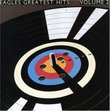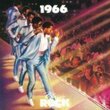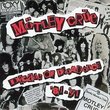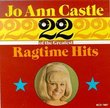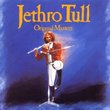| All Artists: J.R. Monterose Title: J.R. Monterose Members Wishing: 2 Total Copies: 0 Label: Blue Note Records Original Release Date: 1/1/2008 Re-Release Date: 9/2/2008 Album Type: Original recording remastered Genres: Jazz, Pop Style: Bebop Number of Discs: 1 SwapaCD Credits: 1 UPCs: 400000010274, 5099921538728, 5099921538759, 724382910213, 724382910220 |
Search - J.R. Monterose :: J.R. Monterose
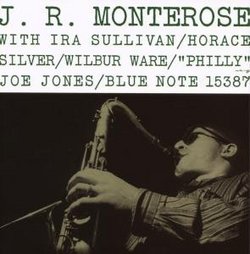 | J.R. Monterose J.R. Monterose Genres: Jazz, Pop
J.R. Monterose, J.R. Monterose |
Larger Image |
CD DetailsSynopsis
Album Description J.R. Monterose, J.R. Monterose Similarly Requested CDs
|
CD ReviewsFinally, One of the 50's Best Blue Notes Todd M. Stellhorn | baltimore, MD | 09/14/2008 (5 out of 5 stars) "Folks it's time to pony up the coin because this wonderful 1956 J.R. Monterose album (his first) is THE hidden gem of the whole 50's Blue Note catalogue. Mr. Monterose is accompanied by the competent, and rather Fats Navvaro sounding Ira Sullivan on trumpet, the always game Philly Jo Jones on drums, the brilliant Wilbur Ware on bass, and in one of those rare 50's appearances as a sideman: Horace Silver on the ivory. However despite the top-tier-talent of his sidemen the story here is all about Mr. Monterose and his incredibly unique tenor saxophone. J.R. is truly one of those esoteric treats that jazz fans love: a monster talent that largely fell through the cracks of history, but nevertheless left us with a handful of brilliant albums that hint at what could have been, because folks if greatness were measured purely on talent then Mr. Monterose would be right up there with the immortals. Though infused with a somewhat Rollins-like sound Mr. Monterose's phrasing is utterly unique, sometimes behind the beat, sometimes ahead of it, and on this album especially his blowing is incredibly keyed up, wholly mingled with sonic strength and creative focus; bubbling over with intensity. The contrast with the more subtle blowing of Ira Sullivan is a very effective one. This is a session Mr. Monterose was most definitely ready for, which makes sense since it was his first. Now even though I've said this is one of the best 50's Blue Note's around it isn't even J.R.'s best album of the 50's, that distinction goes to his 1959 album: "The Message" (available for download on emusic), which I believe is one of great jazz albums of all time, and if I might extend that thought it's my hope that this Blue Note reissue will bring some long delayed attention to the name J.R. Monterose, and with it a critical reevaluation of his legacy. For as someone who owns just about every album he ever put out I can say with truth that discovering Mr. Monterose has been one of my principle joys as a jazz fan, a joy which it's my sincere hope that others will be able to share. In short if you have a love for pure, un-cut, jazz then do yourself a favor, pick up this album, and hope that someone will make available a less expensive reissue of "The Message". Cheers, and believe me this album, and this talent, is a special one. " The greatest swinging/bopping tenor man you've never heard b Eddie Landsberg | Tokyo, Japan | 11/16/2008 (5 out of 5 stars) "Just exactly how a monster playing like this could have so fallen of the radar, both during and after his life time totally beats me... I really mean it. -- I suspect there's more story to the story, but to be 100% I don't know it... My guess would be that either he had issues that made him difficult to work with and word got around... or the opposite, that he was too gentle a soul to deal with the harsh realities of "the labels" and simply went his way... Hearing him, I strongly doubt he was simply "passed over accidentally"... Regardless... considering the line up on this album, the fact that I rarely hear this session dropped as "collector's must have" baffles me... even I missed it way to long (and I'm definitely no music collector novice.) All this said... what about J.R. Montrose...? Well, he attributes Bud Powell as a major influence... While even the shortest listen let's you know he's straight from the school of Parker era bebop, a closer listen does show a lot of Powell's crisp, immaculately articulated yet swinging scale like lines... On top of this though, he also has a big fat Dexter Gordon/Sonny Rollins even texas tenor like sound... In other words, his lines are conceptually sophisticated, yet at the same time, his tone is big at fat, the type that hits you in the gut and really fills the room. (Many players who would follow would play with a similar theoretical approach, but in doing so, in my humble opinion, began to play in a a metalic like way, where notes came over tone, and sometimes the trademark warmth of the tenor was gone and had more alto like qualities - - *am I the only person who constantly moans and whines about this?) One additional point about him, unlike a lot of the more technically proficient players, he didn't seem to lose a sense of entertainment and communicating with the people, therefore, in each solo he's good at certain attention getting hooks to pull you into to what he's going to do before letting loose. He can also go from surprisingly orthodox (yet incredibly well implemented) bop/swing one moment, then play something very modernstic and ear grabbing the next... because of this, there's a strong edge in his playing. For these reasons and more, I agree with description of him as a musician's musician... Further, fans of the tenor will really appreciate a session that really has him up front and juiced. - - All and all, this album may have been missing from your collection until now, but take a lesson, and you'll realize that from this day on, it will have a place on the racks !" Welcome Back J.R. Michael B. Richman | Portland, Maine USA | 09/02/2008 (5 out of 5 stars) "Originally released on CD in the very first round of Blue Note's limited edition Connoisseur Series, under-recognized tenor saxman J.R. Monterose's self-titled debut makes a most welcome return after being out-of-print for nearly 15 years. (Of course, last year's issue by Gambit Spain of the Complete J.R. Monterose Studio Recordings satisfied many rabid customers.) This October 21, 1956 session features another relative unknown on trumpet, Ira Sullivan, but the rhythm trio are household names to jazz fans -- Horace Silver on piano, Wilbur Ware on bass, and Philly Joe Jones on drums. The album features six strong original compositions and an alternate take of the lead-off track, "Wee-Jay." Hearing the delightful frontline partnership of Monterose and Sullivan, you'd be amazed that they weren't offered to make a string of records for Blue Note. In fact, Monterose made only one other record in the 50s (The Message -- see my review), and just a handful of recordings as a leader in his lifetime. Now that "J.R. Monterose" is widely available in the RVG series, do yourself a favor, and get a CD that collectors have been coveting for years."
|

 Track Listings (7) - Disc #1
Track Listings (7) - Disc #1
